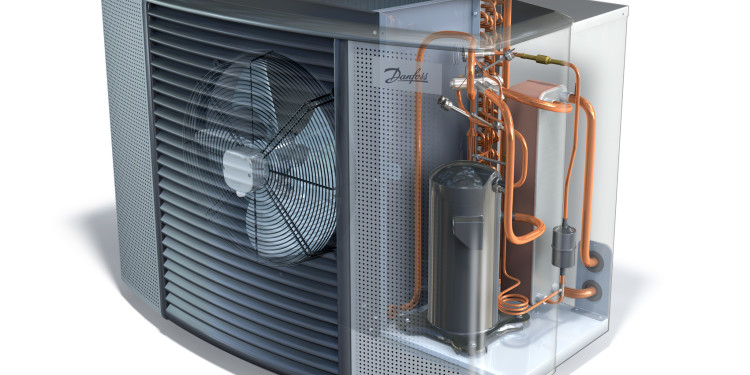
On a very basic level, a heat pumps are simply a device that is able to provide heat as a result of using some external type of power source. It provides this energy in a unique way, specifically by sending it to what is called a heat sink, a process that is used in devices that take advantage of thermal energy. As with any device that is used, there is always going to be there energy lost in the process of transferring this energy, but there are very efficient ones that are created every year. Some of the most obvious examples of a heat pump include air conditioners, as well as freezers that most people have in their home, and is part of any HVAC heating or cooling system. Let’s take a look at the different ways that heat pumps are used, and then the most common ones that are utilized today.
Basic Overview Of Heat Pumps
When you think of a basic refrigeration cycle that occurs with a refrigerator or an air conditioner, the transfer process is similar but in an opposing direction. Instead of broadcasting cold air in order to keep things cool, heat pumps are able to take the surrounding heat from the surrounding environment to be utilized by the unit. The way that they are made today, they are actually much more efficient than the electrical power units that are used to power the systems. Here are the operating principles upon which they work, and then we will show you some applications for these devices which are found in most households.
How Heat Pumps Actually Function
From a completely mechanical perspective, many of the more common devices will actually use the volatile nature of condensing and evaporating fluids. This is usually a refrigerant, and the heat pump is utilized to make the refrigerant solution harder on the inside, and the pressure sends the heat to the area where it is going to be absorbed. Pressurized gas is typically used in conjunction with a compressor, and this extremely hot vapor is sent to what is called a condenser. This causes the liquid under high pressure to be sent through some type of capillary tube or expansion valve to these different areas. Therefore, this cycle of pressurizing liquid, which then releases the heat to be used or absorbed, and then back to normal temperature once again, is the cycle that the refrigerant goes through each time the device is turned on. As long as the heat is transported through either a liquid or flowing gas through some type of pump, it can continue to function as long as exterior sources of energy such as electricity are provided.
Top Applications For Heat Pumps
Electric heat pumps tend to be the most commonly installed. Most modern homes have some type of HVAC system within their house that allows them to keep their home cool during the summer, and warm during the winter. These units are also used in different aspects of plumbing such as domestic water heaters, or even expensive heated swimming pools. Since the upgrade from refrigerants like chlorofluorocarbon R-12 to R-134a, which successfully helped improve the ozone layer, the efficiency of these heat pumps has also increased, even when using other fluids or gases including ammonia, butane or propane. The only environmental problem left to addresses the abundance of carbon dioxide that can be produced by some of these systems. This is leading to global warming, and until they can discover some other way of transferring the heat, it will cause the climate to continue to rise in temperature.
Common Complaints Related To Heat Pumps
Some of the most common complaints that are associated with heat pumps of any kind are the noises that they will make. If anyone has ever used a air-conditioner, specifically those that are on the outside of their home, you know how incredibly noisy they can be. Additionally, aside from the complaints, the noises that are heard or created by these units can actually be used to determine if they are functioning properly, or if there is a problem. That’s why using a professional HVAC company for definite problems that you are having with your air-conditioning, or your heating unit, is always recommended. One other complaint that is quite large is the level of efficiency. This came into play with the advent of ground source heat pumps. These units work by transitioning the heat that is naturally in the ground into households, but the efficiency of these units only works within certain parameters. For example, if it is extremely hot outside, or if it is very cold, the amount of latent heat stored in the ground is simply not going to be enough to handle extreme situations. For those that do have GSHP units for both heating and cooling purposes, it is important to have a secondary source of heat and a way to cool your home down as the efficiency level of these products, albeit very good for the environment, are simply not as useful in these extreme conditions.
Heat pumps come in a wide variety of pump types including prototype transcritical CO2, ASHP, and what is referred to as the theoretical Carnot cycle units. There are also magnetic solid state heat pumps, as well as thermoelectric, with cryogenic laboratories currently working on thermoacoustic heat pumps which could be a revolutionary breakthrough once the technology has been perfected. This brief overview of how heat pumps work, and the different types that are available, should give you a better idea of how your house maintains a constant temperature. These innovations have made it possible for people to become accustomed to constant temperatures, and with new innovative technology in the works, we could soon have units that are not only more effective, but will also be better for the environment.
